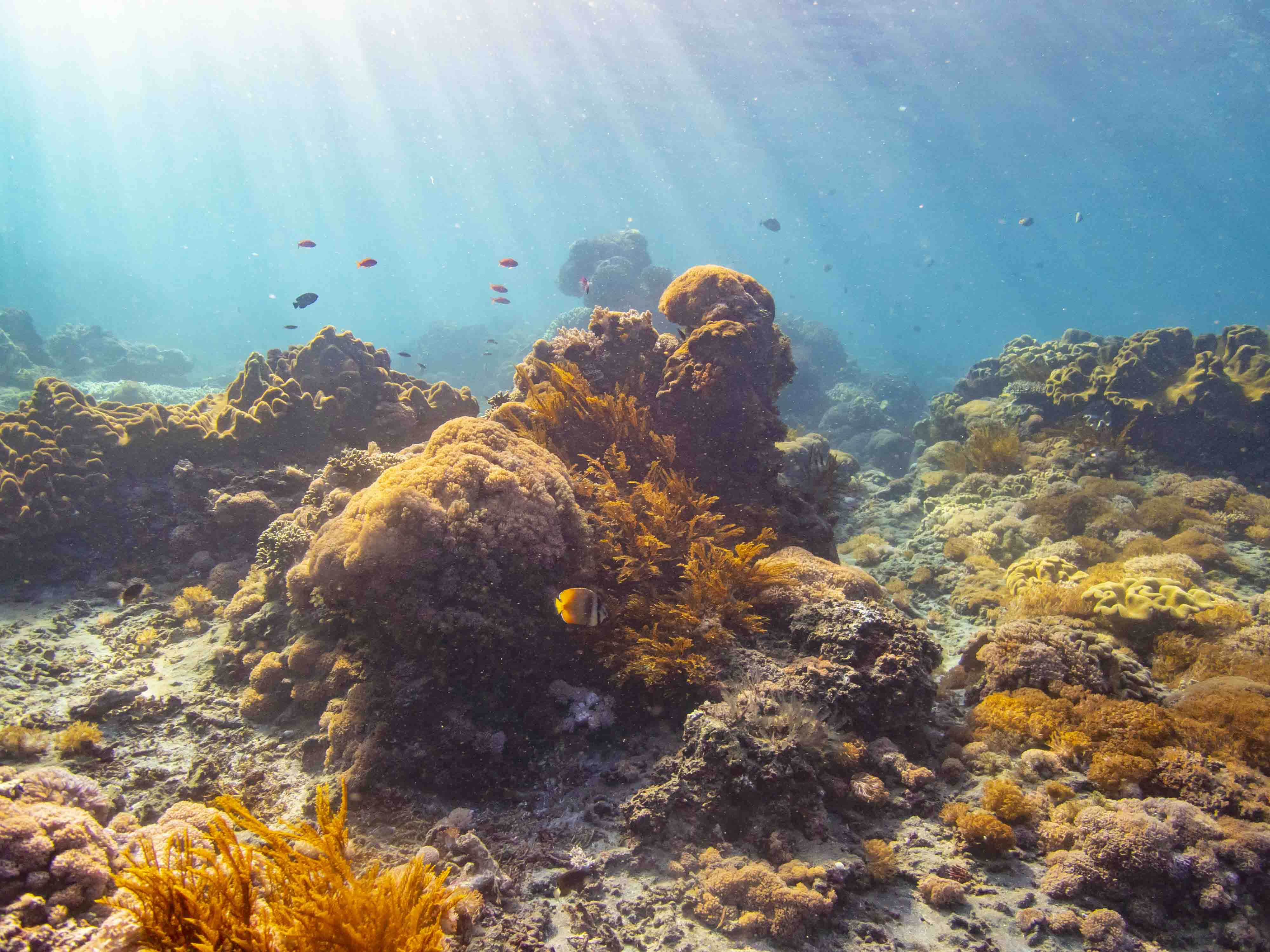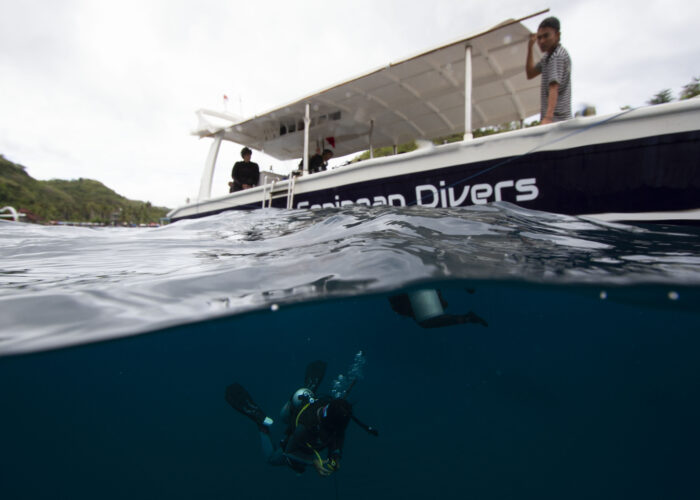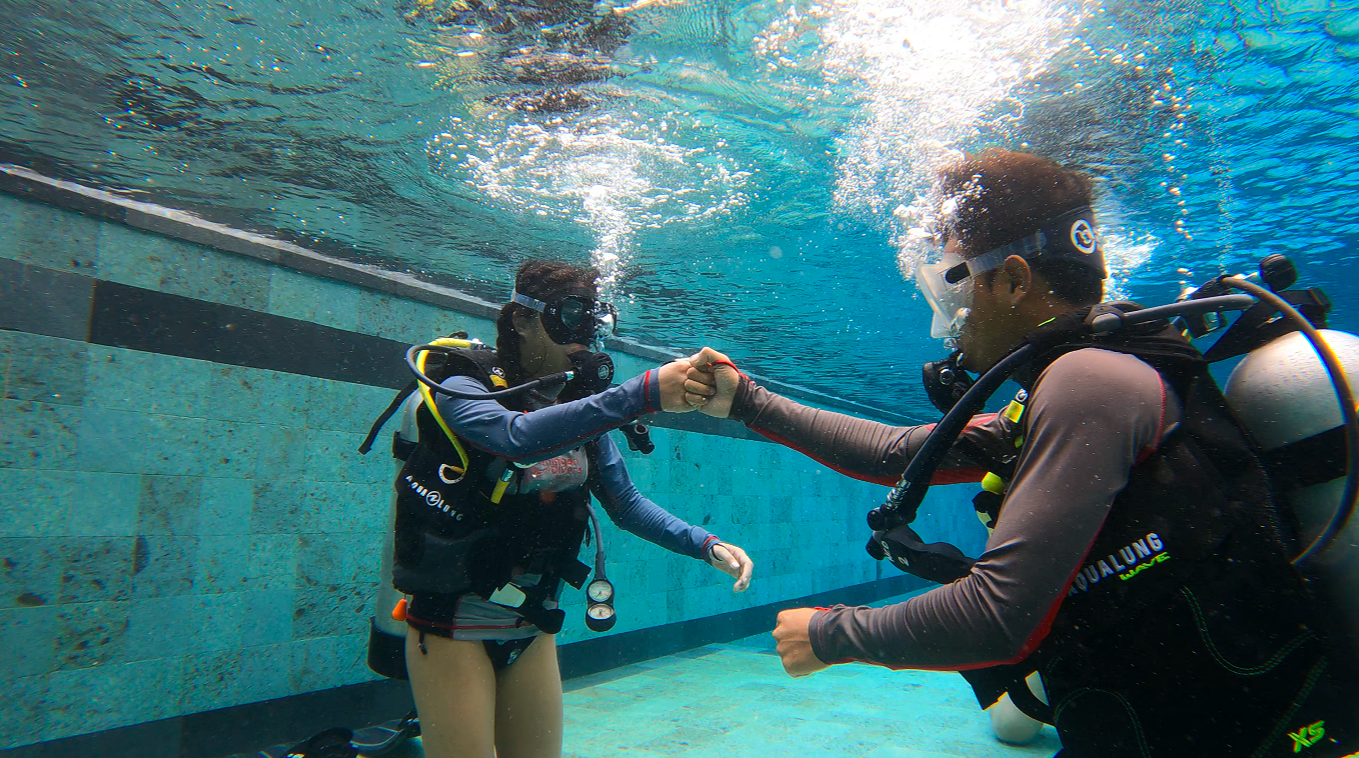As soon as you start your dive adventures on the Nusa islands you’ll find we’re part of a very active diving community contributing to marine research. Research that is important to better understand and preserve the underwater world we love so much.
Looking deeper into the behaviour and distribution of marine species allows us to further improve conservation efforts. It teaches us if populations thrive or decline and helps us to see if and what action is needed. Which areas may need extra protection for example? Or where and in what form are recreational activities possible?
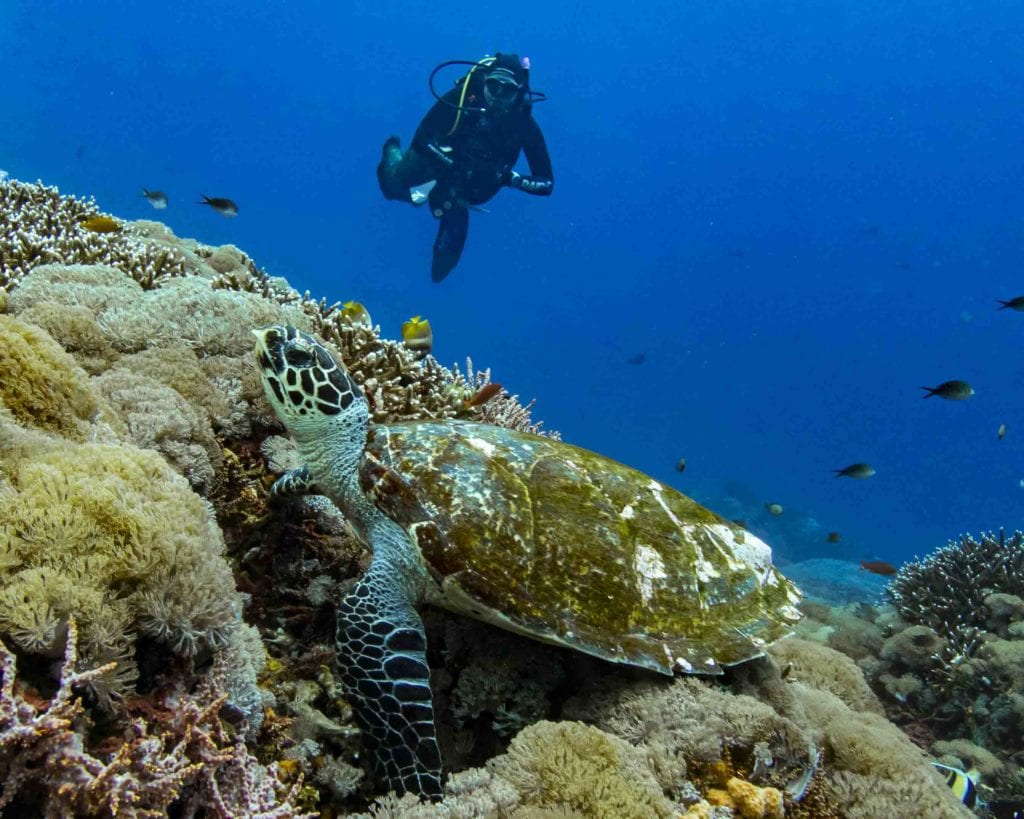
The cool thing is that as a diver on the Nusa islands you can contribute to several research projects on our favourite marine creatures! By sharing your diving pictures you can become a citizen scientist. Are you a bit of an underwater photographer? Your contribution to marine conservation is invaluable!
What is citizen science?
In this day and age, it’s becoming increasingly simple to share information and all kinds of media. Do you like to share those cool turtle pictures with friends and family on Facebook? Well, did you know you could just as easily submit them to a turtle research project?
Citizen science is a form of scientific research that makes use of data or observations collected by volunteers. Those volunteers can be anybody that has access to data that is relevant to the study. Besides controlled experiments, this allows a researcher access to an ocean of information (literally and figuratively). All this data would otherwise be impossible to collect in the same time frame.
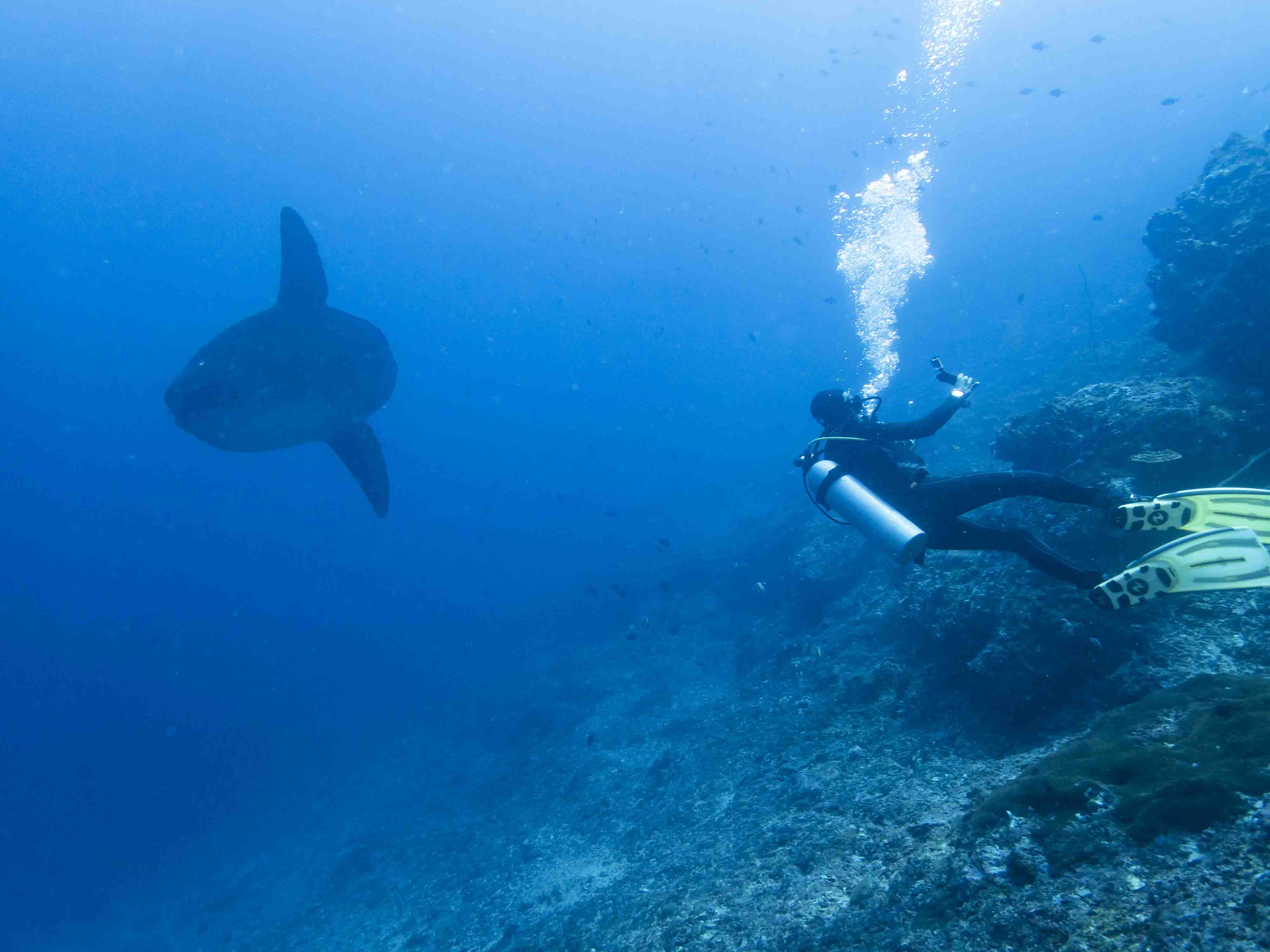
On the Nusa islands, there are several interesting citizen science projects that can use your help. Keep your camera ready or go over those pictures from your last diving holiday again. Maybe you can learn more about that manta you saw or even name a turtle!
Nusa Penida Turtle Project: share those headshots
The Nusa Penida Turtle Project focuses on turtle conservation around the Nusa islands. The main species are green turtles and hawksbill turtles. The project page is readily accessible through Facebook. Joining this project is as easy as sharing a reasonably close turtle picture. The most important thing is that the side of the head is clearly visible. Those headshots of turtles can be used to identify the animal to the individual level!
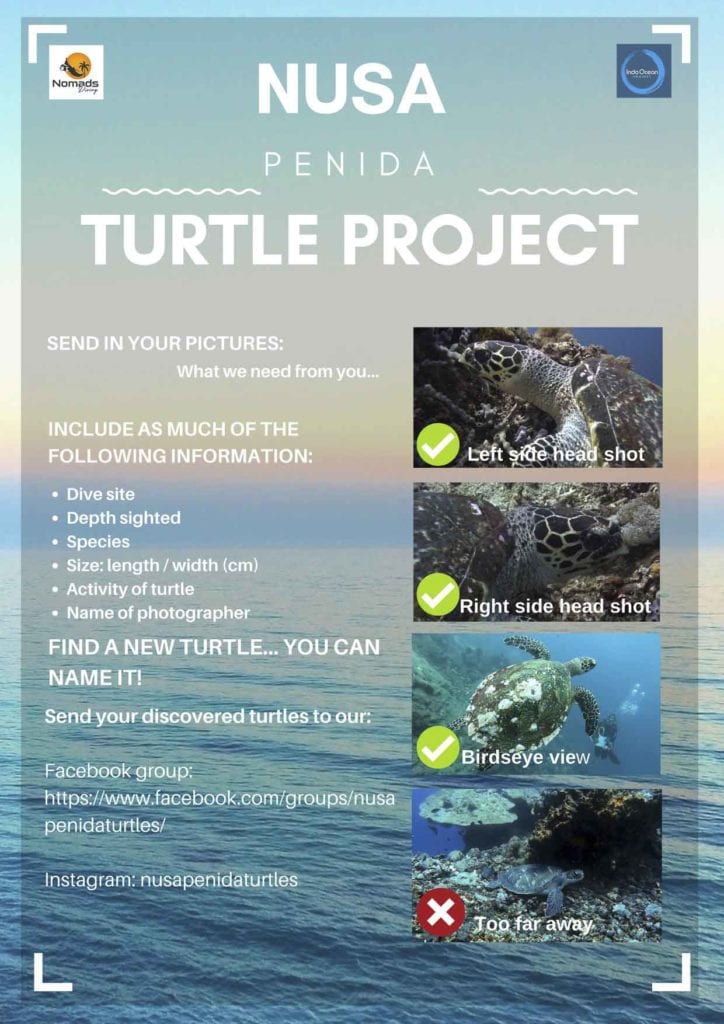
Added information like dive site and depth of the encounter is valuable too. Other data include behaviour observed and length of the animal. This information may further improve our understanding of the animals. It may tell us more about the distribution and behaviour of the individual turtles around Nusa Penida.
But even if you don’t have all this information, your contribution is very welcome! And if you discover a new turtle, you even get to name it! Maybe you will even come across one of the turtles named after members of our dive team. There are quite a few swimming around…
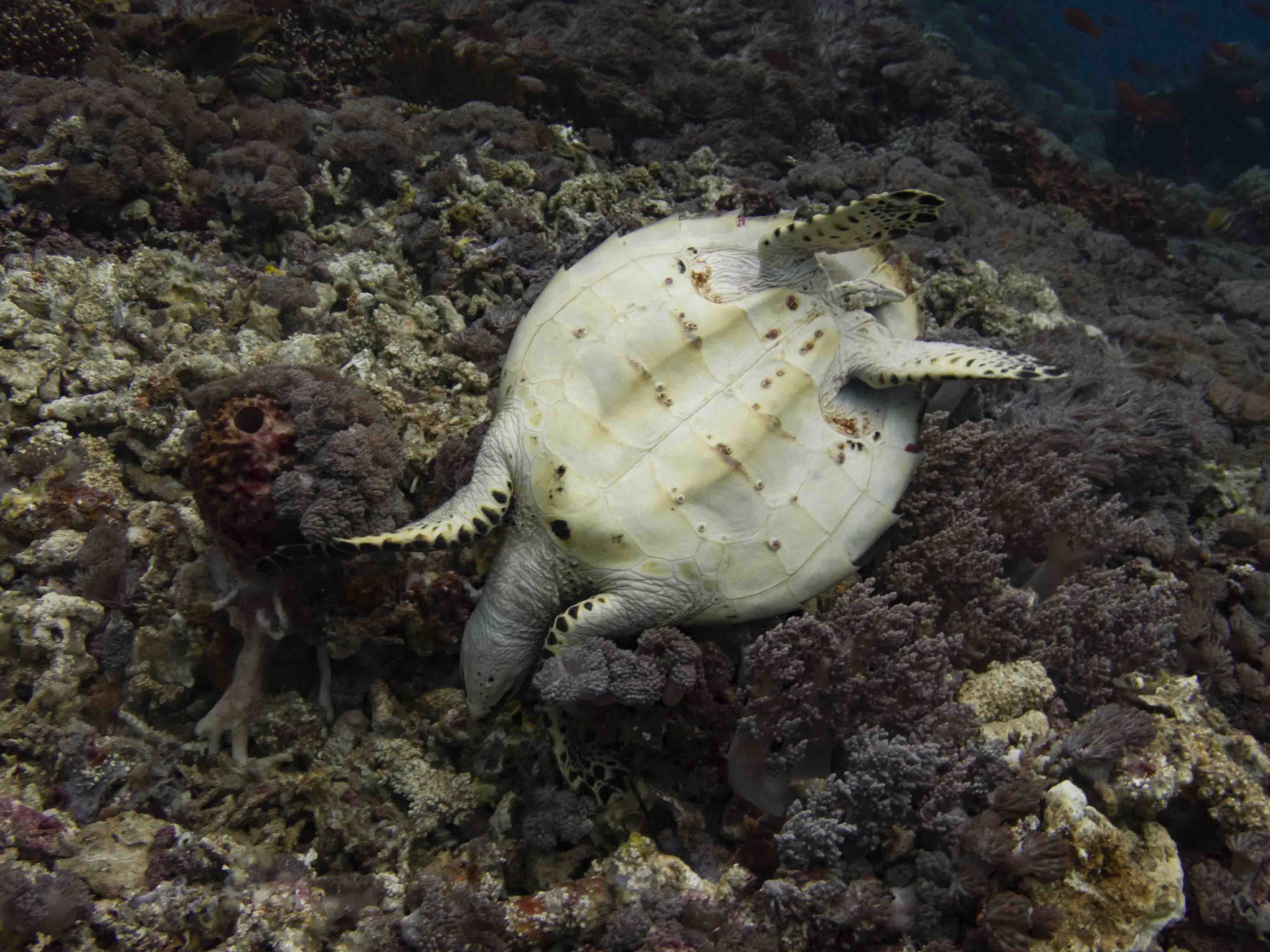
Manta Matcher: spot the spots
Other marine research on the Nusa islands includes mantas. Much like turtles, mantas have a little trait that can help us identify individuals. Only for mantas, it’s obviously not about the scales on the head but about the spots on the belly! MantaMatcher, created in partnership with the Marine Megafauna Foundation, is the wildbook for manta rays. It’s also the place where you can contribute to their conservation by sending in suitable manta pictures.
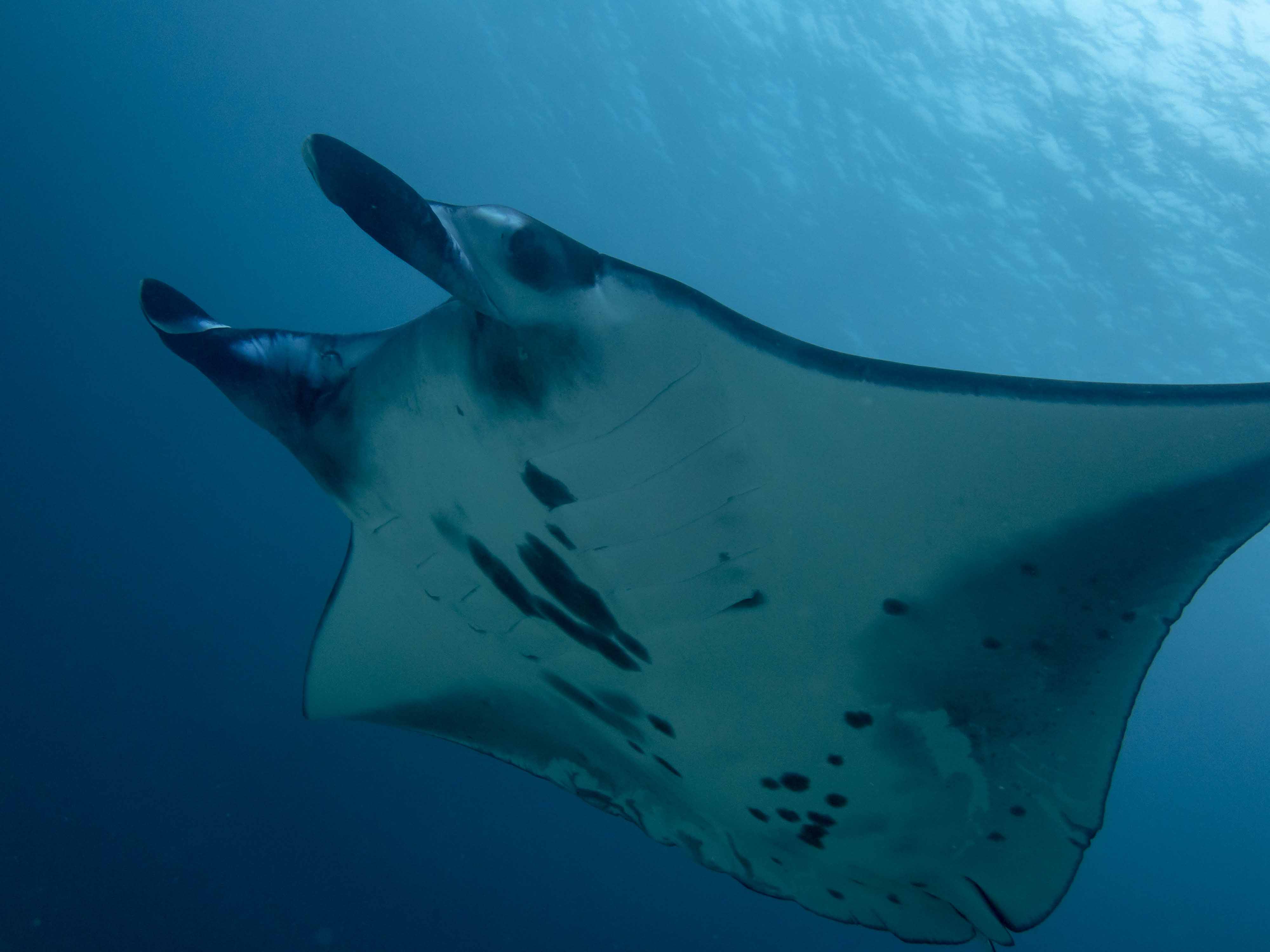
Each manta has an individual fingerprint: the pattern of spots on its belly. If you managed to get a good photo of a manta belly during your dive, it can be used to identify the manta! Once submitted, a researcher will check your photo and the data accompanied. If everything is in order they will run the MantaMatcher algorithm. Similar to facial recognition software, this algorithm will compare the pattern to those mantas that are already in the database.
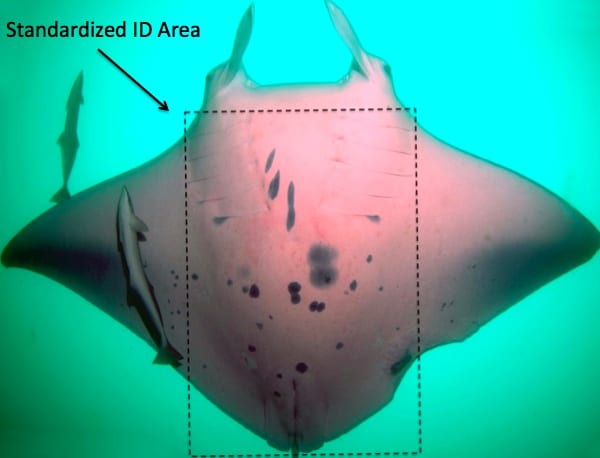
If it’s a match we can learn more about that individual manta. Where it was last sighted or how far it travelled for example. If it’s a new manta, a new profile is created. It’s even possible to get email updates if your spotted manta is re-sighted!
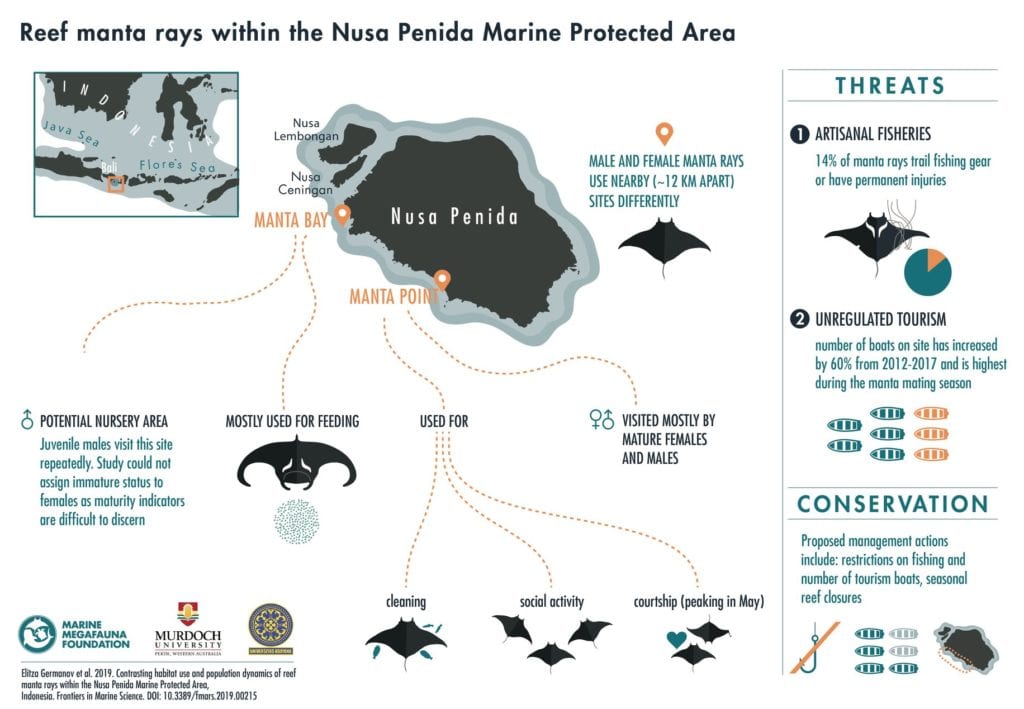
Uploads to MantaMatcher have already contributed to our better understanding of these species. Research on manta migrations in Indonesia, with data from MantaMatcher, helped in achieving protection for mantas across all of Indonesia’s waters!
Bali sunfish identification: match your Mola!
Several dive operators on both Bali and the Nusa islands are currently participating in the Bali Sunfish Seasonality Study. The project is run by Marine Biologist Marianne Nyegaard and project manager Jennifer Han Karmy. The idea is to record dives and mola sightings throughout the year, to help reveal the underlying patterns in sunfish occurrence.
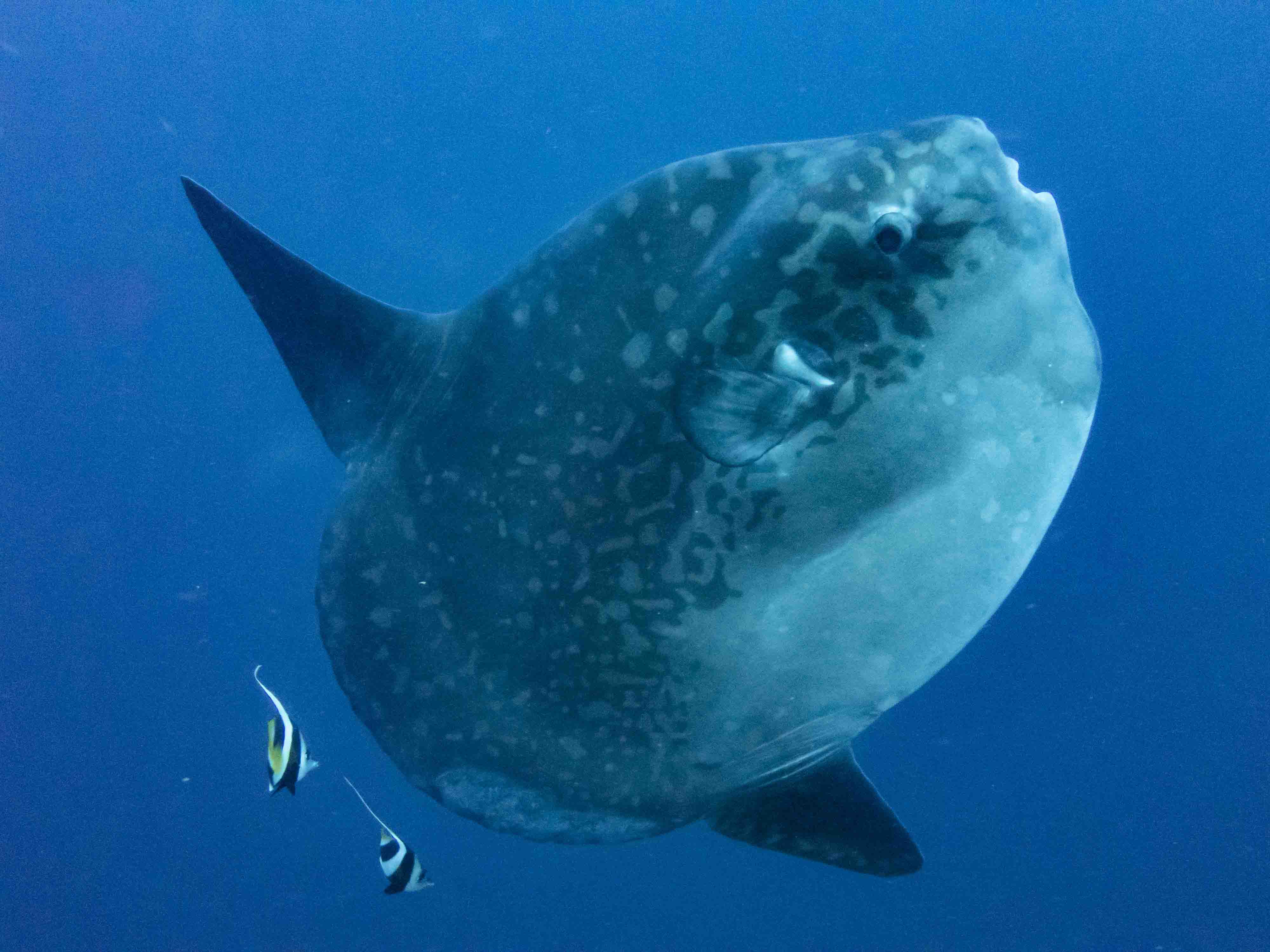
One thing this research already helped clear up is which species we actually encounter around Nusa Penida. Locally these sunfish are still widely referred to as ‘mola-mola’. However, the Bali Sunfish Photo ID Catalogue brought to light that these fish are strictly speaking not Mola mola. It appears to be a close relative, Mola alexandrini: the bumphead sunfish. Interesting but in some way a little disappointing since ‘mola-mola’ sounds much more catchy, right? So that will probably stick around for a while to make it a little more confusing.
But guess what? Individual sunfish can be identified too! So underwater photographers, keep your camera ready. By now you get how it’s done: The skin pattern on both its sides can be analyzed to identify the animal. So submit your shots together with the requested data and match your mola! The research aims to expand our understanding of the Bali sunfish phenomenon and to enable better decisions for sustainable management of their habitat.
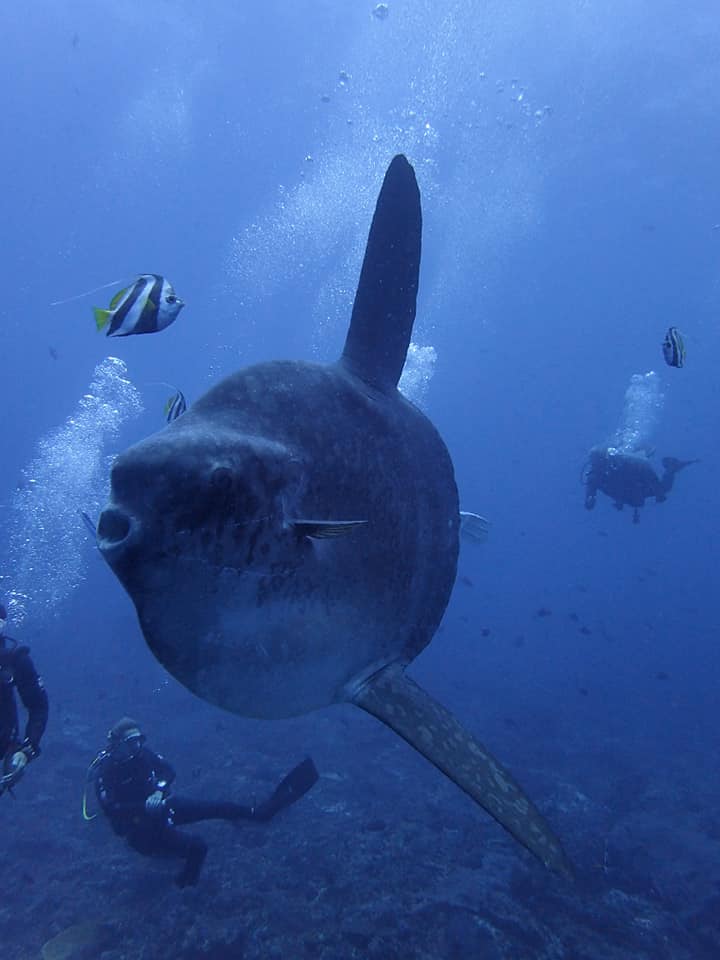
Project Aware: Dive Against Debris
Last but not least, there is one other important way in which you can contribute to marine conservation. It might not seem as fun as meeting up with beautiful animals and getting their pictures identified. But it is at least as important to preserving our beautiful underwater world for the future.
Dive Against Debris is Project AWARE’s flagship citizen-science program. It’s as simple as taking the trash you find during your dives with you out of the ocean.
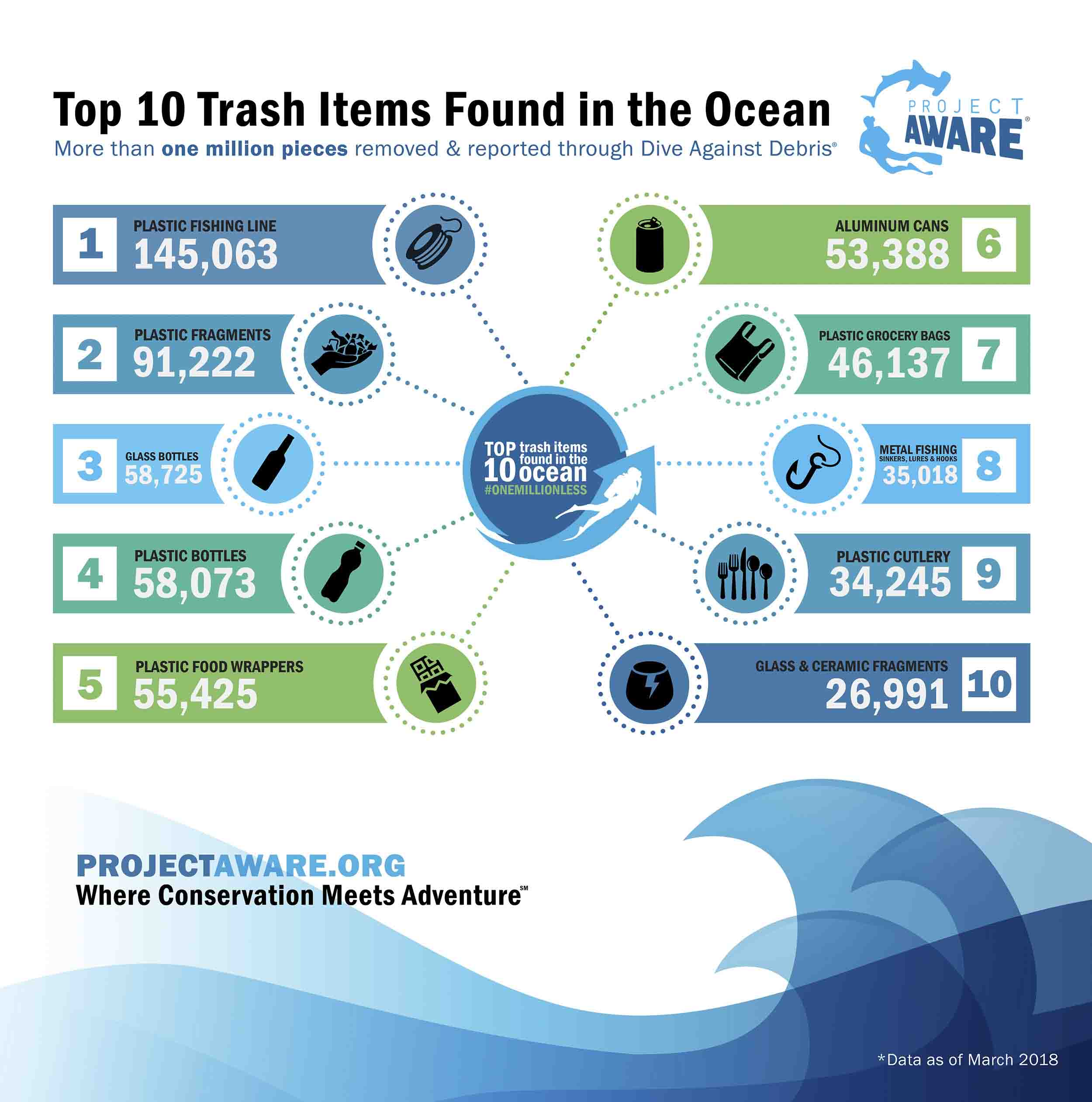
There is just one next step before you get that waste recycled: report the data on what you collect. For example, where you found it, which materials you collected and how much of each. There is a special Dive Against Debris app available to make your life easy. You can download the free Dive Against Debris app from Google Play or iTunes.
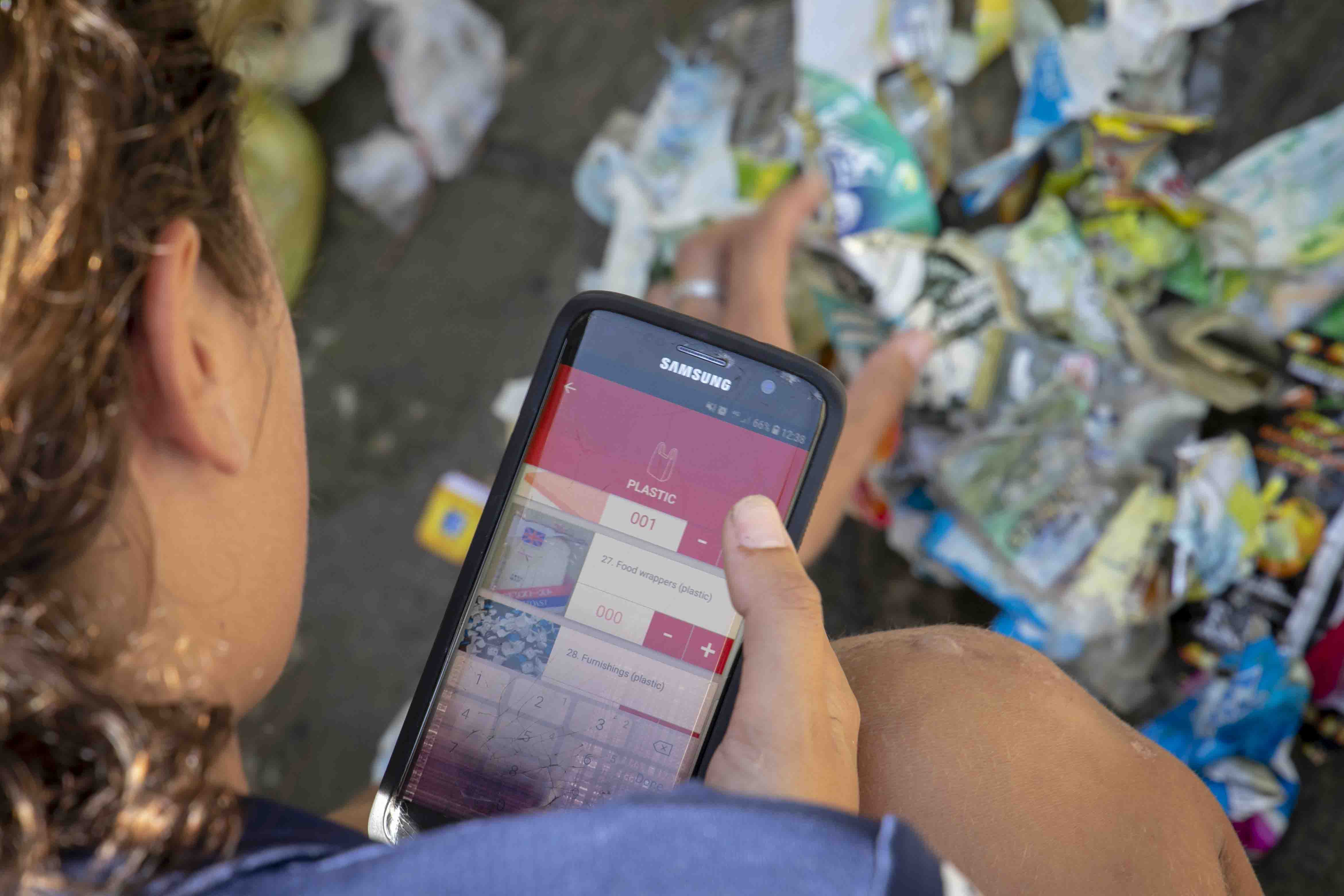
By collecting data on the types, quantities and locations of materials collected, you can help support the development and implementation of policies. It teaches us more about solid waste management, locally and globally. This, in return, is an important step toward cleaner oceans and conservation of our beautiful reefs.
